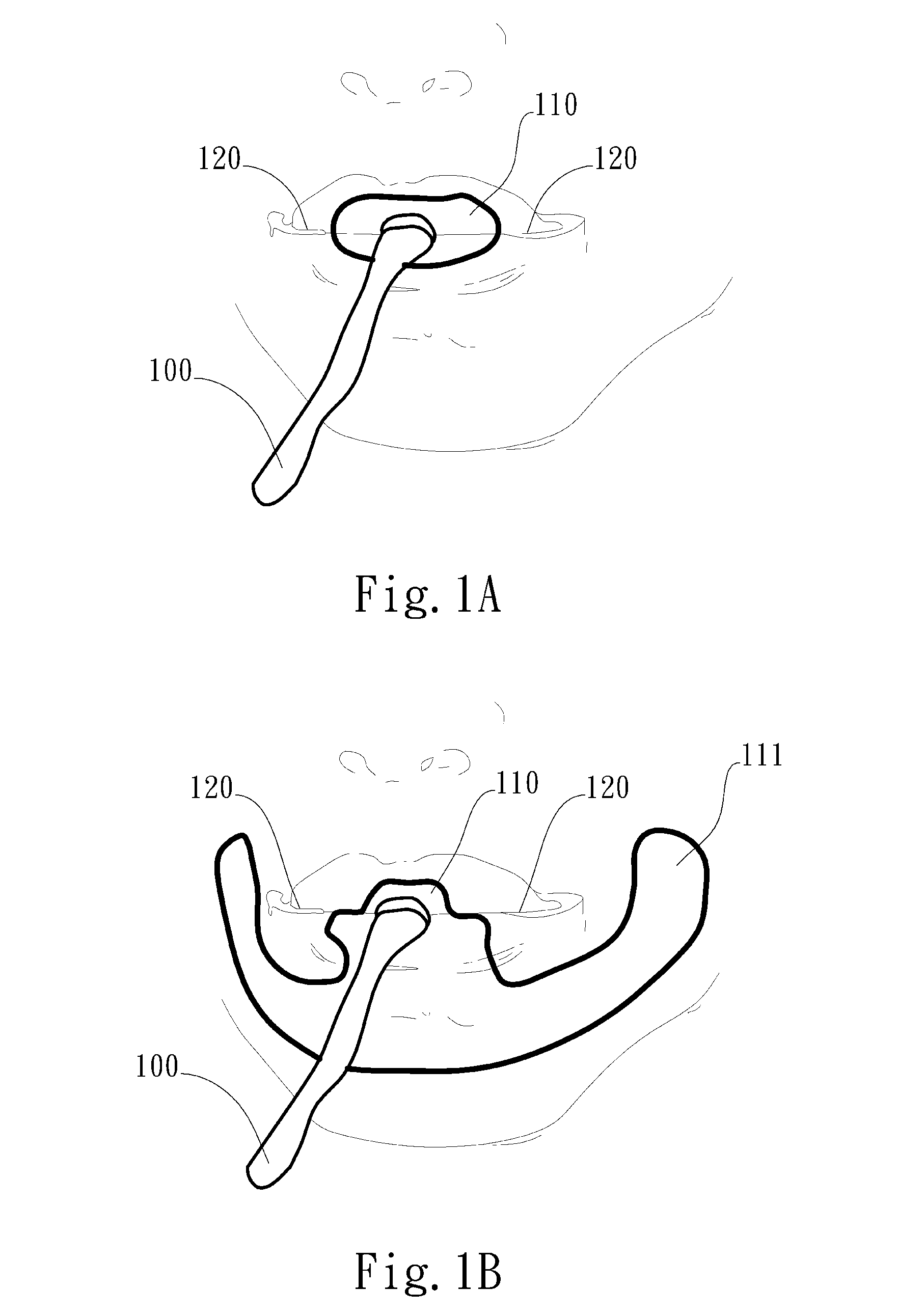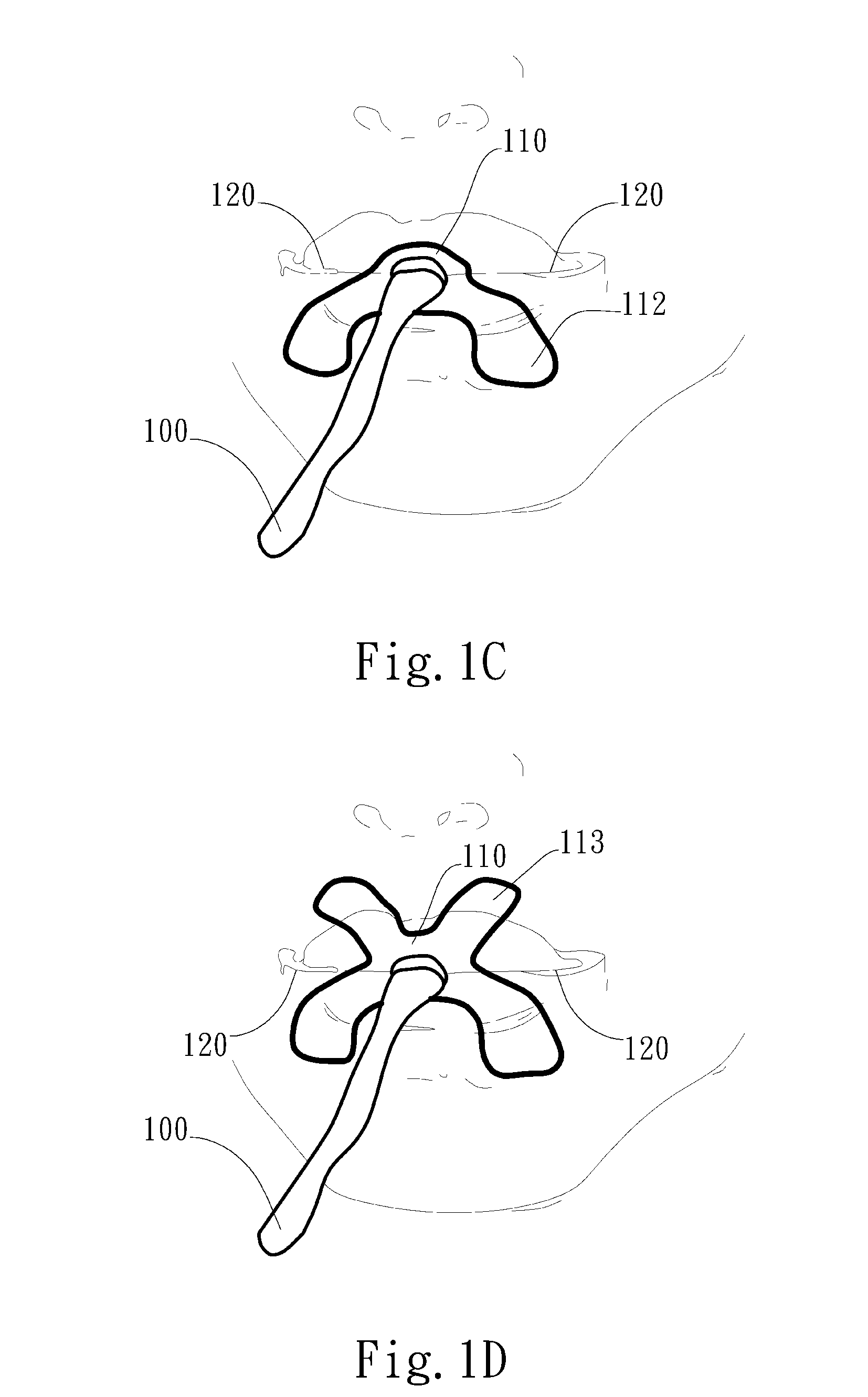Adjustable oral interface and method to maintain upper airway patency
a technology of oral interface and upper airway, which is applied in the field of oral apparatus, can solve the problems of osa moderate to severe, reduced upper airway muscles, and poor concentration of people with moderate to severe osa, and achieve the effects of preventing disengaging from patient's mouth, preventing sleep-disordered breathing, and reducing the tone of the muscles in the upper airway
- Summary
- Abstract
- Description
- Claims
- Application Information
AI Technical Summary
Benefits of technology
Problems solved by technology
Method used
Image
Examples
second embodiment
[0031]Please refer to FIG. 2A to FIG. 2D. FIG. 2A demonstrates the front view of an oral apparatus according to the present invention. The oral apparatus comprises of an upper attaching component 210 and a lower attaching component 220. The attaching components can be of various thickness and flexibility, and is capable of adhering firmly to the skin. Potential materials of the attaching components include silicone, flexible plastic, latex, gel, hydrogel, acrylic gel as well as other materials coated with an adhesive substance. The adhesive upper and lower attaching components 210 and 220 can be temporarily attached to the skin around the upper and lower lips, respectively. The oral apparatus also has a connector 230 to control the distance between the upper attaching component 210 and the lower attaching component 220 in order to close the mouth. The upper and lower attaching components 210, 220 may only be applied to lip region away from the opening of the mouth to allow for the m...
third embodiment
[0032]Please refer to FIG. 3A to FIG. 3D. FIG. 3A demonstrates the front view of an oral apparatus according to the present invention. The oral apparatus comprises of an upper attaching component 310 and a lower attaching component 320. One of the attaching components may have a conduit engaging slot 340. The first end of a fluid conduit 100 can pass through the conduit engaging slot 340 and enter the oral cavity. The second end of the fluid conduit 100 is connected to a negative pressure source (not shown). The fluid conduit 100 may slide up or down along the conduit engaging slot 340 to accommodate variation of distance between the mouth opening and the attaching component. The upper and lower attaching components 310 and 320 can be adhesive tapes of various thickness and flexibility, and is capable of adhering firmly to the skin. Potential materials of the upper attaching component 310 and the lower attaching component 320 include silicone, flexible plastic, latex, gel, hydrogel,...
fourth embodiment
[0033]Please refer to FIG. 4A to FIG. 4E. FIG. 4A demonstrates the front view of an oral apparatus according to the present invention. The oral apparatus comprises of an upper attaching component 410 and a lower component 420. The attaching components can be of various thickness and flexibility, and is capable of adhering firmly to the skin. Potential materials of the upper attaching component 410 and the lower component 420 include silicone, flexible plastic, latex, gel, hydrogel, acrylic gel as well as other materials coated with an adhesive substance. The adhesive upper and lower attaching components 410 and 420 can be temporarily attached to the skin around the upper and lower lips, respectively. The oral apparatus also has a mechanical connector 430 to control the distance between the upper attaching component 410 and the lower attaching component 420 in order to close the mouth. The upper and lower attaching components 410, 420 may only be applied to lip region away from the o...
PUM
 Login to View More
Login to View More Abstract
Description
Claims
Application Information
 Login to View More
Login to View More - R&D
- Intellectual Property
- Life Sciences
- Materials
- Tech Scout
- Unparalleled Data Quality
- Higher Quality Content
- 60% Fewer Hallucinations
Browse by: Latest US Patents, China's latest patents, Technical Efficacy Thesaurus, Application Domain, Technology Topic, Popular Technical Reports.
© 2025 PatSnap. All rights reserved.Legal|Privacy policy|Modern Slavery Act Transparency Statement|Sitemap|About US| Contact US: help@patsnap.com



